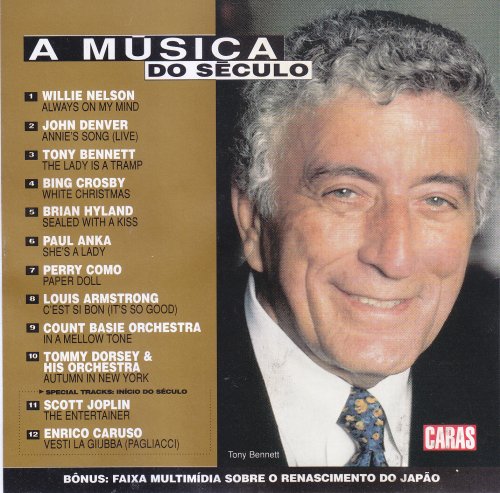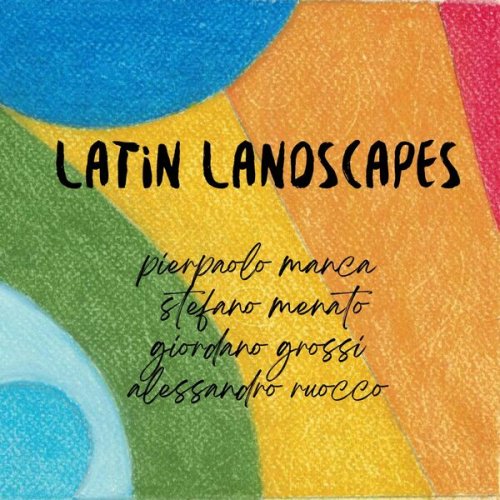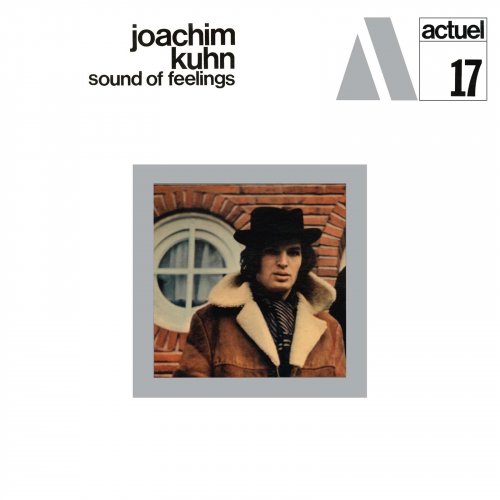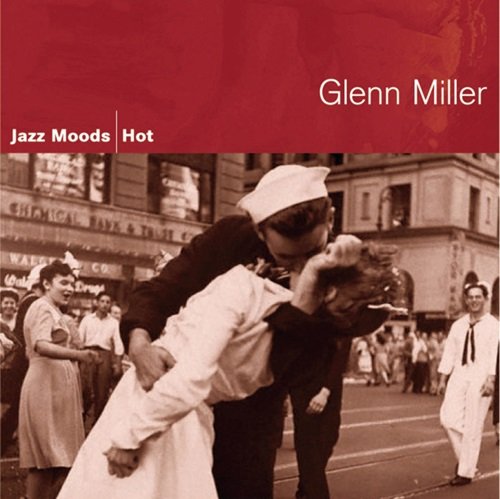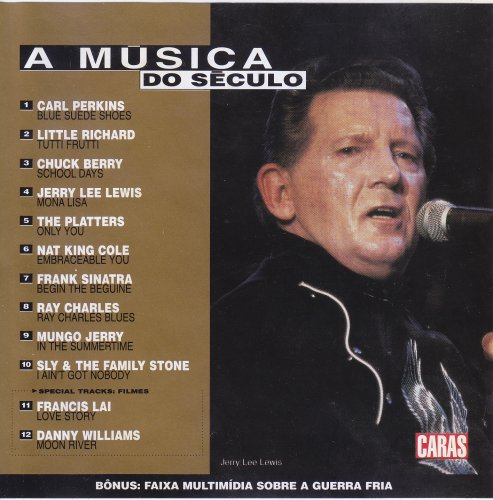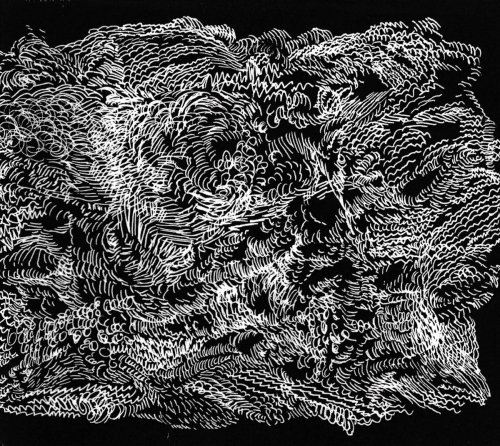Virginia Luca, Francesco Vernero - Viotti, Rolla: Viola Duets (Duo pour deux altos, "Torinese" Viola Duets) (2022)
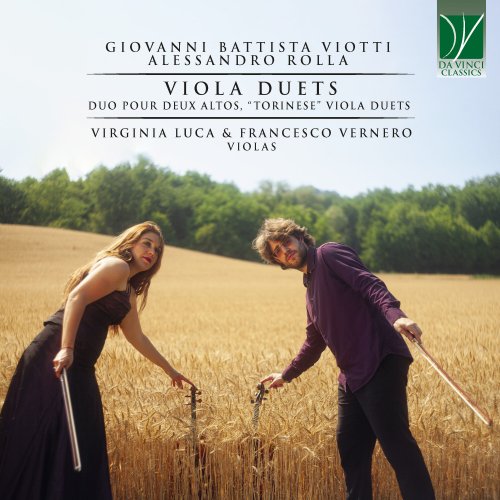
Artist: Virginia Luca, Francesco Vernero
Title: Viotti, Rolla: Viola Duets (Duo pour deux altos, "Torinese" Viola Duets)
Year Of Release: 2022
Label: Da Vinci Classics
Genre: Classical
Quality: flac lossless (tracks)
Total Time: 00:57:36
Total Size: 247 mb
WebSite: Album Preview
TracklistTitle: Viotti, Rolla: Viola Duets (Duo pour deux altos, "Torinese" Viola Duets)
Year Of Release: 2022
Label: Da Vinci Classics
Genre: Classical
Quality: flac lossless (tracks)
Total Time: 00:57:36
Total Size: 247 mb
WebSite: Album Preview
01. Duo pour deux altos: I. Andante con Variazioni: Grandioso ed espressivo
02. Duo pour deux altos: II. Allegretto Grazioso
03. Duo pour deux altos: III. Andante
04. Duo pour deux altos: IV. Allegro con moltissimo moto
05. Duetto WoBI 1 in B-Flat Major: I. Allegro
06. Duetto WoBI 1 in B-Flat Major: II. Rondo: Minuetto Comodo
07. Duetto WoBI 2 in E-Flat Major: I. Andante Sostenuto
08. Duetto WoBI 2 in E-Flat Major: II. Rondo: Andantino
09. Duetto WoBI 3 in D Major: I. Allegro
10. Duetto WoBI 3 in D Major: II. Rondo: Tempo di Minuetto
11. Duetto WoBI 4 in G Major: I. Allegro Maestoso
12. Duetto WoBI 4 in G Major: II. Rondo Amoroso: Tempo di Minuetto
13. Duetto WoBI 5 in E-Flat Major: I. Allegro con moto
14. Duetto WoBI 5 in E-Flat Major: II. Minuetto con Esprezione
15. Duetto WoBI 6 in F Minor: I. Presto
16. Duetto WoBI 6 in F Minor: II. Adagio
17. Duetto WoBI 6 in F Minor: III. Minuetto a Rondo
The typical image of the nineteenth-century virtuoso is that of a musician who performs pieces of an almost incredible difficulty, frequently with improvised sections. His or her performances frequently take place in the aristocratic salons, but equally often in the theatres and concert stages. Even though the recital, as we now know it, was not yet developed, and the concerts were often in the form of “academies” (juxtaposing artists, genres, styles, and performing forces), the picture of a soloist positioned at the centre of the stage and capturing the admired gazes of numerous listeners is very common.
And it was indeed in this kind of situation that we could find both Giovanni Battista Viotti and Alessandro Rolla at the peak of their careers (Rolla more as an orchestra musician, Viotti as a concertising soloist). Still, this Da Vinci Classics album does not focus on that stereotypical image of the solitary musical hero, but rather on the entirely different situation of private music-making.
Whereas the former situation sets the soloist against the background of theatrical illumination, frequently of large symphonic orchestras, and in front of a large audience of enthused listeners, the latter involves the intimacy of a tightly knotted dialogue, the enjoyment of shared musicianship, the absence of an audience (or the presence of very few listeners), a relaxed attitude, and frequently the possibility of an educational value or of the participation of amateur players.
Yet, these two seemingly opposing worlds are much more deeply interwoven than one could now imagine. The great virtuosi normally were also appreciated music teachers; they usually participated in these soirées of impromptu music-making; they frequently condescended to bend their extraordinary expertise in front of those who wished to play with them, and to provide musical material for such situations.
No great virtuoso was above these contexts; indeed, arguably many of them rather enjoyed these experiences, where the stress was doubtlessly inferior to that caused by an important concert stage, and the pleasure probably higher.
Both composers featured on this Da Vinci Classics album certainly belong in the ranks of the finest virtuosi of the nineteenth century. And both represent the glories of the Italian violin school in the highest degree.
Still, Viotti was also a very international figure, who spent in Italy only the first years of his musical activity, and then roamed throughout Europe to great acclaim, but also with numerous adventures, particularly as concerns politics and finance.
He was born in a small town, Fontanetto Po, near Vercelli, in today’s Piedmont, and in what was at the time the Kingdom of Sardinia. His father, Felice, was a blacksmith, but was very interested in music, and so he encouraged his child’s first efforts with the violin. Fortunately, Giovanni Battista, even before his tenth birthday, had the chance of being heard by the bishop who was officiating a religious ceremony in which the boy was invited to play. The bishop appreciated the young violinist’s musical talent and advised that he move to Turin, where a patroness and noblewoman, the Marquise of Voghera, took care of his education. Giovanni Battista was entrusted to the hands of Gaetano Pugnani, who was one of the greatest musicians of the era. He was the chapel master of the Royal Theatre Orchestra, and the heir of the already century-old tradition of Italian violin playing: his musical ancestry dated back to Corelli himself via Giovanni Battista Somis. Teacher and pupil developed a close friendship, which would last for years and would lead them to frequently play together, also in international tours.
Viotti was soon enlisted in the ranks of the orchestra where his teacher played, and at the same time began giving private concerts in the halls of the Turinese nobility. However, Turin itself was too narrow a stage for the young musician, who dreamt of wider horizons in terms of both musical experiences and career opportunities. Together with Pugnani, he embarked in an international tour, touching Switzerland at first, then Germany with the great “musical” cities and courts of the era (Dresden, Berlin etc.). Then came Poland and even Russia, where they performed for the Czarina herself. During this tour, Viotti began proposing – and then issuing in print – his Violin concertos: together, the 29 works he composed in this genre constitute possibly his most valuable heritage in terms of composition.
Back to the West of Europe, Pugnani returned to Turin, whilst Viotti oriented his steps toward Paris. Here he debuted at the celebrated season of the Concert spirituel in 1782, and was repeatedly invited to perform again and again. In France, Viotti also began an activity which he would continue to practise to the end of his life, more or less fortunately, i.e. that of theatrical impresario. Paris also brought him in touch with nobility, at the very eve of the French Revolution; in 1789, the year of the Bastille, he was entrusted with the management of the Théâtre du Monsieur, which he brought to very high levels of musical quality and success.
Still, the Revolution was at the gates; and such a good friend of the aristocracy could not remain safe in the burning ville lumière. So, he emigrated to the UK, where his fame had preceded him. There, he soon established himself as a leading figure of the London panorama, both socially and artistically. Here too he had important roles as a theatrical manager, and this put him in touch with some of the leading musicians of the era. In particular, he was in very good terms with Franz Joseph Haydn, who frequently invited him to play at his benefit concerts. But a new turn of events was behind the corner: Viotti decided to try his hand in the import/export of wines and liquors. Sadly, this adventure cost him high, and left him practically penniless. Backed financially by some of his wealthy patrons, he sought asylum in Paris, where he was still remembered and appreciated. There, he could eventually realise a dream he had cherished for years, i.e. that of managing an operatic theatre (at first the Théâtre Italien, and later the Opéra itself). Still, the task was probably beyond his ability, at least in terms of economic management, and in 1821 he left this activity for good, going back to London where his loyal friends supported him and assisted him to the end, which came in 1824. Viotti had left the concert stage since a long time already, and only limited himself to play for selected audience and in private or semiprivate settings. In spite of this, and of the non-musical initiatives he realised, his compositional activity was unrelenting, and he left us numerous Concertos, and a great number and variety of chamber music works. These, as happens with the Duo recorded here, certainly display the thoroughness of his technique and the variety of his expressive and creative palette. However, at the same time, they never push the demands too far; the pleasure of music-making is never drowned by the utter technical difficulty of a merely virtuoso approach. In this Duo, we observe Viotti’s skill in devising an intense and majestic theme, and in adorning it with valuable variations; the intermediate movements are the richest in expressivity, whilst the finale is a whirlwind of musical ideas.
This Duo for two violas makes full use of the palette of expressivity and brilliancy of these instruments, but remains an example of a relatively uncommon genre. However, this comparative rarity does certainly not apply to Alessandro Rolla, who was probably the most prolific composer of all times in terms of duets for bowed string instruments. His output includes some 126 duets for two violins, 78 for violin and viola, 32 for two violas, etc. Of course, this may depend on his own exceptional skill as a violin and viola player: his official debut took place in the magnificent church of St. Ambrogio in Milan (1772/4) performing a Viola concerto of his own composition (this allegedly was “the first viola concerto ever heard” – at least by the concert’s reviewer!). Ten years later (1782) he was employed as principal violist in the orchestra of the Ducal Orchestra of Parma, and further ten years later he became concertmaster (i.e. principal violinist but also conductor). After one more decade (1803) we find him in the same role in what was then, and possibly still is, the best operatic orchestra in Italy, that of the Teatro alla Scala. He remained in that role for thirty years, and actively sought to continuingly increase the musical level of the ensemble. He had also a very intense activity as a teacher: he had the honour of being the first professor of violin and viola at the newly established Royal Conservatory of Milan, and, in this capacity, he gave lessons to some of the greatest musicians of the subsequent generation. He was held in high esteem by Paganini, who briefly studied with him but who befriended Rolla for many years. To Rolla’s credit one should also mention his tireless efforts for promoting the most important contemporaneous compositions in Italy, including the operas and symphonies by Mozart and Beethoven, along with the Italian operas by Rossini, Bellini and Donizetti.
Rolla’s lifelong commitment to opera transpires from his own writing, and particularly from the Duets recorded here. The analogous pattern they share (just two movements, but variously articulated) bears witness to a unified concept, and to one which could easily be grasped not only by professionals but also by advanced amateurs. These pieces invite performance; they guarantee satisfaction, both technically and musically, and have the rare quality of pleasing the musicians performing them at least as much as the audience hearing them.
Together, these works by Viotti and Rolla open up a refreshing perspective on how a dialogue of violas may expand its scope and involve a wide-ranging affective palette, ranging from the stormy to the lyrical, from the melancholic to the ironic, from the joyful to the reflective.
![Laurine Frost - Maiden (2025) [Hi-Res] Laurine Frost - Maiden (2025) [Hi-Res]](https://img.israbox.com/img/2025-12/01/3e2dvxmqjebf2huqbw8eabcua.jpg)
![Förster & Friends - At Home (2025) [Hi-Res] Förster & Friends - At Home (2025) [Hi-Res]](https://www.dibpic.com/uploads/posts/2025-12/1764687493_folder.jpg)
